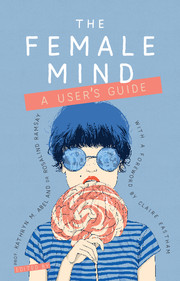Book contents
- Frontmatter
- Acknowledgements
- Contents
- Foreword
- Introduction: being female
- Part I Women in perspective
- Part II Women and society
- Part III Women and their environment
- Part IV Women and specific disorders
- 18 Depression and other mood disorders
- 19 Anxiety disorders
- 20 Trauma and post-traumatic stress disorder
- 21 The dangers of rumination
- 22 Obsessive–compulsive disorder
- 23 Eating disorders and body dysmorphic disorder
- 24 Psychosexual disorders
- 25 Personality disorders: risks and recovery
- 26 Self-harm
- 27 Women and addiction
- 28 Autism spectrum disorder
- 29 Attention-deficit hyperactivity disorder
- 30 Psychotic illness
- 31 Postnatal depression and postpartum psychosis
- 32 Living longer: normal age-related changes, dementia and depression
- Part V Women and treatment
- Contributors
- Index
22 - Obsessive–compulsive disorder
from Part IV - Women and specific disorders
Published online by Cambridge University Press: 02 January 2018
- Frontmatter
- Acknowledgements
- Contents
- Foreword
- Introduction: being female
- Part I Women in perspective
- Part II Women and society
- Part III Women and their environment
- Part IV Women and specific disorders
- 18 Depression and other mood disorders
- 19 Anxiety disorders
- 20 Trauma and post-traumatic stress disorder
- 21 The dangers of rumination
- 22 Obsessive–compulsive disorder
- 23 Eating disorders and body dysmorphic disorder
- 24 Psychosexual disorders
- 25 Personality disorders: risks and recovery
- 26 Self-harm
- 27 Women and addiction
- 28 Autism spectrum disorder
- 29 Attention-deficit hyperactivity disorder
- 30 Psychotic illness
- 31 Postnatal depression and postpartum psychosis
- 32 Living longer: normal age-related changes, dementia and depression
- Part V Women and treatment
- Contributors
- Index
Summary
Marina's story
Marina is a 30-year-old married woman with two young children. A few years ago, her youngest son, George, became seriously ill with meningitis. Although George recovered well, Marina started to worry about her children catching serious illnesses and dying. She began to clean the house meticulously, scrubbing the entire kitchen and bathroom with bleach every day. If she touched anything touched by non-family members, she would wash her hands, and she constantly used antiseptic hand gel. Her hand-washing increased until she was doing it almost 100 times a day. Bathing or showering could take up to 3 h, as she felt the urge to wash until she felt certain she was completely clean. As a result, her hands became chapped and she developed bodily eczema. The children were discouraged from mixing with friends apart from at school, and Marina told them to use antiseptic hand gel at all times. When they returned from school, they had to take off all their clothes in the hallway; Marina washed the clothes immediately, while the children had a bath. Marina's husband had become so concerned about her vigorous washing of the children that he had started returning home at the end of the school day to supervise more ‘normal’ washing of the children, before he then returned to his work as an electrician.
Every attempt by her husband and mother to encourage Marina to seek help had failed. She felt too embarrassed to own up to the problem and felt she was doing her best to keep the children well and happy. After a discussion with her mother, Marina began to realise that her children were living a very restricted life and that they should have more freedom. She also worried that Social Services might become involved in the family and so, reluctantly, went to her general practitioner (GP).
Marina's GP talked to her about treatments for obsessive– compulsive disorder (OCD). Initially, she had the choice of starting on a medication and psychological treatment involving graded exposure. Marina felt she would prefer to try a psychological approach first, and her GP referred her to the local psychological therapy service.
- Type
- Chapter
- Information
- The Female MindUser's Guide, pp. 139 - 145Publisher: Royal College of PsychiatristsPrint publication year: 2017

